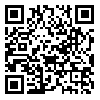Volume 9, Issue 2 (Winter 2024)
Health in Emergencies and Disasters Quarterly 2024, 9(2): 99-106 |
Back to browse issues page
Ethics code: IR.NUMS.REC.1400.030
Download citation:
BibTeX | RIS | EndNote | Medlars | ProCite | Reference Manager | RefWorks
Send citation to:



BibTeX | RIS | EndNote | Medlars | ProCite | Reference Manager | RefWorks
Send citation to:
Raiati R, Khorashadizadeh F, Hosseini S S, Malekan F, Samghani A, Ghodsi H. Identifying the Barriers to Performing Dispatcher-assisted Bystander Cardiopulmonary Resuscitation in Out-of-hospital Cardiac Arrest. Health in Emergencies and Disasters Quarterly 2024; 9 (2) :99-106
URL: http://hdq.uswr.ac.ir/article-1-543-en.html
URL: http://hdq.uswr.ac.ir/article-1-543-en.html
Roohollah Raiati1 

 , Fatemeh Khorashadizadeh2
, Fatemeh Khorashadizadeh2 

 , Somayeh Sadat Hosseini3
, Somayeh Sadat Hosseini3 

 , Fatemeh Malekan3
, Fatemeh Malekan3 

 , Ameneh Samghani3
, Ameneh Samghani3 

 , Hasan Ghodsi
, Hasan Ghodsi 

 4
4


 , Fatemeh Khorashadizadeh2
, Fatemeh Khorashadizadeh2 

 , Somayeh Sadat Hosseini3
, Somayeh Sadat Hosseini3 

 , Fatemeh Malekan3
, Fatemeh Malekan3 

 , Ameneh Samghani3
, Ameneh Samghani3 

 , Hasan Ghodsi
, Hasan Ghodsi 

 4
4
1- Pre-Hospital Emergency Medical Services and Disaster Management Center, Neyshabur University of Medical Sciences, Neyshabur, Iran.
2- Department of Biostatistics, Faculty of Health, Neyshabur University of Medical Sciences, Neyshabur, Iran.
3- Department of Medical Emergencies, School of Nursing and Midwifery, Neyshabur University of Medical Sciences, Neyshabur, Iran.
4- Department of Medical Emergencies, School of Nursing and Midwifery, Neyshabur University of Medical Sciences, Neyshabur, Iran. , ghodsih1@nums.ac.ir
2- Department of Biostatistics, Faculty of Health, Neyshabur University of Medical Sciences, Neyshabur, Iran.
3- Department of Medical Emergencies, School of Nursing and Midwifery, Neyshabur University of Medical Sciences, Neyshabur, Iran.
4- Department of Medical Emergencies, School of Nursing and Midwifery, Neyshabur University of Medical Sciences, Neyshabur, Iran. , ghodsih1@nums.ac.ir
Abstract: (837 Views)
Background: Bystander cardiopulmonary resuscitation (BCPR) is critical for the survival of
patients with out-of-hospital cardiac arrest (OHCA). This study aims to identify barriers to performing dispatcher-assisted bystander cardiopulmonary resuscitation (DA-BCPR) in patients with OHCA.
Materials and Methods: This cross-sectional study was conducted on bystanders of 151 patients with OHCA who received emergency medical services (EMS) from June 2022 to June 2023 in Neyshabur City, Iran. The study data were collected using a questionnaire and telephone interviews. Data were analyzed using the chi-square test and Fisher exact test. P<0.05 was considered statistically significant for all tests. Analyses were done using R software, version 4.0.1.
Results: Of 151 patients, 18.92% were less than 50 years old and 68.92% were male. In 69% of cases, the arrival time of EMS was less than 10 min, and 84.46% of patients received BCPR at the scene. The most common barrier to performing DA-BCPR was “not recognizing a cardiac arrest and how to perform cardiopulmonary resuscitation (CPR)” (41.48%). It was reported that 38.35% of the bystanders were familiar with CPR. There was a significant relationship between the bystanders’ familiarity with CPR and performing DA-BCPR (P<0.01).
Conclusion: The most common barrier to performing DA-BCPR on patients with OHCA is the lack of knowledge and skills in bystanders. Improving bystanders’ knowledge and educating them about cardiac arrest, CPR, and DA-BCPR is critical to help them improve outcomes for OHCA patients.
patients with out-of-hospital cardiac arrest (OHCA). This study aims to identify barriers to performing dispatcher-assisted bystander cardiopulmonary resuscitation (DA-BCPR) in patients with OHCA.
Materials and Methods: This cross-sectional study was conducted on bystanders of 151 patients with OHCA who received emergency medical services (EMS) from June 2022 to June 2023 in Neyshabur City, Iran. The study data were collected using a questionnaire and telephone interviews. Data were analyzed using the chi-square test and Fisher exact test. P<0.05 was considered statistically significant for all tests. Analyses were done using R software, version 4.0.1.
Results: Of 151 patients, 18.92% were less than 50 years old and 68.92% were male. In 69% of cases, the arrival time of EMS was less than 10 min, and 84.46% of patients received BCPR at the scene. The most common barrier to performing DA-BCPR was “not recognizing a cardiac arrest and how to perform cardiopulmonary resuscitation (CPR)” (41.48%). It was reported that 38.35% of the bystanders were familiar with CPR. There was a significant relationship between the bystanders’ familiarity with CPR and performing DA-BCPR (P<0.01).
Conclusion: The most common barrier to performing DA-BCPR on patients with OHCA is the lack of knowledge and skills in bystanders. Improving bystanders’ knowledge and educating them about cardiac arrest, CPR, and DA-BCPR is critical to help them improve outcomes for OHCA patients.
Keywords: Out-of-hospital cardiac arrest, Cardiopulmonary resuscitation, Dispatcher-assisted cardiopulmonary resuscitation
Type of Study: Research |
Subject:
Emergency
Received: 2023/06/28 | Accepted: 2023/01/21 | Published: 2024/01/1
Received: 2023/06/28 | Accepted: 2023/01/21 | Published: 2024/01/1
Send email to the article author
| Rights and permissions | |
 |
This work is licensed under a Creative Commons Attribution-NonCommercial 4.0 International License. |





